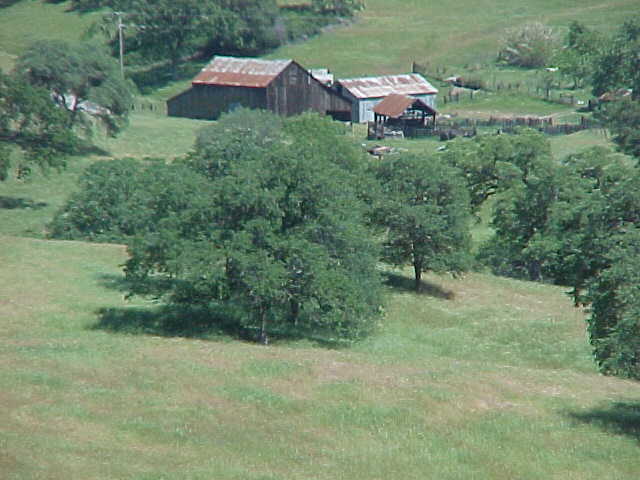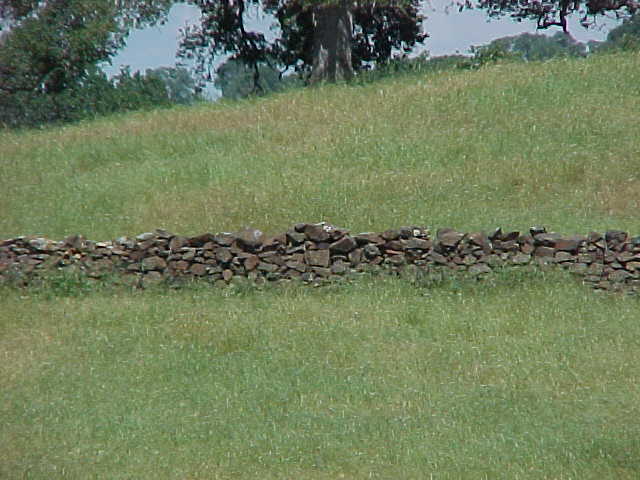 , CALIFORNIA
, CALIFORNIA

photo by c feroben
Fresno Bee, Sun Nov. 30, 1975
by Woody Laughman
The old hamlet with this
illustrious name in the rolling hills, pines and oaks on the old
Raymond-Mariposa Road has been gone for these many years, but the
historic old ranch bearing the same name goes on as if forever.
And God, it is an old place,
old, old. old everywhere one looks- the original plank house on the
sprawling 2,000 acre ranch that goes back to the 1850s still stands, as
does an old barn with the harness and horse collars hung upon the pegs
where the hostler put them when he unharnessed the last team many
years ago; the old hand bellows on the forge; the antique wagon wheel
wright machine on the wall of the stable; and fixtures and fittings and
tools marking each of the decades that followed.
The kitchen in the main ranch
house is still heated by a wood stove on which the coffee pot perks.
the fireplace still heats the living room; and throughout the
house are furnishing and paintings that came around the Horn from new
York City before the first shots of the Civil War sounded.
THE RANCH was founded probably
in the early 1850's. by a Dr. Harris about whom little is known.
What he was a doctor of is not clear, but when he sold the ranch to
Morgan W. Quick for $250 in 1859, he signed the deed with a laborious x
mark.
Quick came to California around
the Horn from New York State in 1849 to stake a gold claim near
Mariposa, making some $10,000 a year from the diggings.
Over the years the ranch
prospered and passed from one Quick generations to the next.
Today it is owned by the fourth and fifth generations, Clyde E. Quick,
former Chowchilla educator who lives part time on the ranch, and Gary
E. Quick of Fresno. There is a sixth generation coming
along, Gregory E., Gary's son.
THE ORIGINAL Quick left a great
heritage -substantial ranch buildings which have weathered these more
than 100 years; the pioneering of barbed wire and gasoline-powered farm
trucks and equipment; the techniques of growing new crops in the
foothills; the developing of a unique gravity flow ranch water system
from the many live springs, all of which are still being used; and the
instituting of ranching techniques that are still practiced.
But his great monument is the
wall of rock that fences in 640 acres of the ranch, gently pushing up
grassy hillocks, dropping into glens and stretching across the rolling
native prairie land.
Quick, deciding to take
advantage of the abundance of loose rock in the region, decided to
build a fence of rock to keep his stock in and the deer and neighbor's
cattle out.
HE CAPTAINED a chinese boss to
take on the monumental task, settling on terms over a bottle of
claret. The four miles of rock fence, four feet high and two feet
wide at the base were built at a cost of $1.75 a rod. Quick
agreed to provide the Chinese coolie masons, supplied by Oriental labor
contractors, with their daily pork and rice, buying a great herd
of hogs at about a cent and a half a pound, to feed the men.
The Chinese captain kept strict
accounts of the progress of his workers, sitting on a chair under an
umbrella, clicking off each foot of fence on an abacus. The
coolies pushed forward rapidly, pigtails flying all day and
sometimes during moonlight nights, for each had to lay a rod and a
half a day or forfeit their days pay, twenty-five cents.
The fence was completed in a year at a cost of $6,000.

photo by
c feroben
A hamlet soon grew up around the
ranch. In 1890 it was granted a post office and named Ben
Hur. The name was not so much for Lew Wallace's novel as
for a powerful and legendary stallion on the state run between
Raymond and Mariposa.
EVERYTHING is old about the
ranch today, even the 1944 model Jeep which the present-day Quick's use
to get into the rough country along Rancheria Creek. Even the
foreman, Bill G. Yeeny is getting older, in his 10;s now. He has
been on the ranch for 41 years.
The other day Clyde Quick drove
around the place in the old Jeep, opening gates and closing them so the
stock would not get out. We climbed sharply rising hills, rolled
into glens and in and out among the ancient oaks and pines that date
back further than his illustrious great-grandfather.
Along Rancheria Creek, about a
half mile from the ranch headquarters, is a lovely green place where
until barbed-wire fences came about a hundred years ago, Indians
traditionally migrated in early autumn to drink of the clear, cold
springs, gather acorns and hunt rabbits, deer and quail.
THEY CAMPED along the creek at
about the point where today it flows into a stock reservoir. On a
great flat rock about the bank they pounded corn and dried
acorns. The hold in the rock from the corn pounding are deep,
some almost a foot.
And across the creek on a smooth
rocky sidehill, Indian children used to slide while their mothers were
pounding corn and tanning pelts.
The smooth, rocky incline is
still well marked from their bottoms on which they used deer tallow to
make the slide fast and smooth. The tallow has embedded itself
into the rocks and neither rain nor snow nor whipping particles of
earth from spring storms have been able to obliterate it.
ABOVE THE old Indian camp ground
is Rocky Hill where a miner from Mariposa diggings is buried, nobody
quite sure of the exact spot.
One fine autumn day in about
1860, the miner and a friend stole into the Indian campground in the
late afternoon while the braves were out hunting, making advances
toward the young maidens.
The braves, unexpectedly
returning, chased the miners up Rocky Hill. One escaped, but the other
fell mortally wounded, dying in the night.
Ben Hur ranchhands found the
body some days later and buried him where he had fallen. But the
rock that marked the shallow grave were long ago displaced by spring's
eroding rains, gopher and squirrel diggins and the thousands of cattle
which grazed the hill.
Nobody knows the name of the
miner reposing on Rocky Hill. But then nobody remembers the names
of the Indian maidens or the braves or the braves of the cowboy burying
party or the hundreds of coolies who built the wall that stands against
time itself.
All anybody remembers anymore
are a doctor who could only sign his name with an X; the remarkable
pioneer Morgan W. Quick and a legendary stallion, Ben Hur.
transcribed by C feroben

 , CALIFORNIA
, CALIFORNIA
 photo by
c feroben
photo by
c feroben